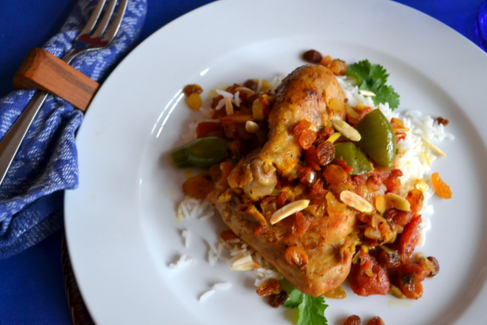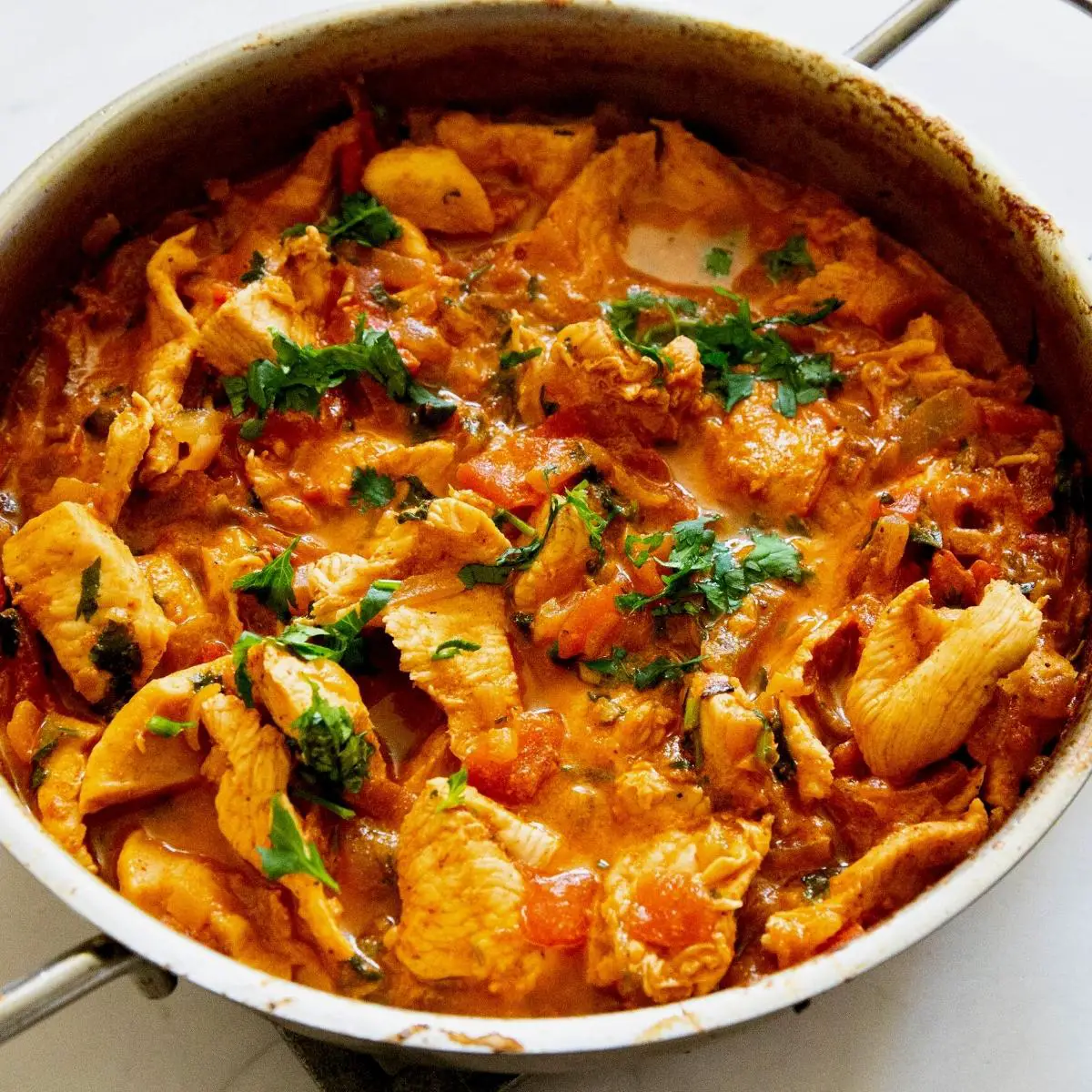The Country captain dispute(s)
- rosemary
- Aug 31, 2023
- 6 min read
"I have yet to find two explanations for the name of this dish that agree!" Madhur Jaffrey

Or two recipes that more or less align come to that. Maybe we are actually even talking about two different dishes altogether.
I was going to continue my intermittent series on Anglo-Indian food with Country Captain, which I had seen mentioned here and there, and particularly in one of Madhur Jaffrey's books, so I started looking for information about that strange name, origins, recipes, etc. Of course, I began with Wikipedia, where I found, to my astonishment, the statement that it is 'popular in the southern states of the USA'', with barely a mention of India, other than that it probably came from there. And as I continued my investigations I rapidly discovered, from virtually all of the American sites that I visited that Country Captain is considered to be a classic Southern USA dish. American? Surely not.

So why do they claim it as their own? Well there are a couple of versions, which sort of eventually blend together. This version can be found on the New York Times website and is by Sam Sifton, although you might find yourself up against a pay wall. I think it's one of the recipes and articles that are quoted here and there when talking about origins. It is however pretty typical of what I now understand is the American version - a pretty simple dish of fried chicken with onions flavoured with curry powder in a tomatoey sauce, with the addition of green peppers and thyme into the mix. It is then served on rice with currants (well dried grapes of some kind) and almonds scattered on top. Probably the kind of thing that we might all have done when we made a curry in our youth. Chicken fried with onions and curry powder then stewed in water or stock. And I must say that most of the American articles that I read on the subject were full of folksy stuff of grandma's old recipes and nostalgic memories of meals to impress guests. One cringes somewhat. Below are a couple more examples that I found - and as you can see they look sort of similar.
So why do they claim it as their own? Well there a couple of versions, which sort of eventually blend together.
Version number one has a British captain from India sailing into either Charleston or Savannah - you can imagine they both vie for the honour - bringing with him a recipe for an Indian chicken curry which he left with the Americans to become extremely popular. Which is how it got the Captain part of the name. Mind you, there are others who think the 'Captain' is a bastardisation of 'capon' which of course is a kind of chicken. I'm not sure that I have come across an explanation of the 'Country' part of the American name.

Version number two is the recipe first appearing in 1857 in a book by Eliza Leslie called Miss Leslie's New Cookery Book - in Pennsylvania - which is not the south. She also gives it East Indian origins - first introduced to the British by a captain of the sepoys, the native East Indian troops. This version was much simpler - basically boiled chicken, cut up and fried with curry powder and onions. Then in 1906 a New York chef at Delmonico's from Switzerland fried green peppers and garlic with the onions, and added dried thyme and parsley with the curry powder. It was also he who added the currants and almonds. The popular dish is then changed by a Southern society wife who adds canned tomatoes and serves it to Franklin D. Roosevelt, who loved it, popularised it yet more as well as General Patton who had it served to his troops. So there you go. For the full details read an article by Robert Moss on the Serious Eats website. I gather it has fallen out of favour somewhat. Well it would wouldn't it when these days you can get 'real' and much tastier Indian food Although there might well be a minor retro revival going on.
Back to to India. Well it's a curry and so surely originates in India, however bastardised it has become. So what about that name? Two slightly different theories again:
“The intriguing name comes from the English habit when in India of referring to anything Indian as ‘country’ (in contrast, often unflattering contrast, to ‘European’…). Country Captains were in charge of country ships, and a simple dish often served onboard of spiced kid, veal or chicken with onions was called Country Captain, too: it was well known by 1825, and like kedgeree was brought back [to England] as part of the diet they had grown used to by returning members of the Raj.” Jane Grigson

A Facebook page called Nutrifest, has quite a detailed and authentic sounding explanation. It seems that the British would often travel up the Ganges from Calcutta to Farrukhabad, a little further upriver from Lucknow and downriver from Delhi. They travelled in small boats called Budgerows.
"Some researchers say, that the name may have been attributed to the recipe because sometimes the head sailor or the “Captain” of the "Cookboats"(budgerow,the country boats) prepared this basic hot and very spicy chicken curry in a “deg”(Bengali:dekchi, a large deep cooking utensil)." ... The recipe for country captain's chicken can be found in a obscure cookbook called " A Thirty five years resident"" Nutrifest

Sometimes the dish was not actually cooked on board but in cookboats that drew up beside the larger boats. However, these were not always reliable. There was another route which went overland along the Dak routes (the postal routes). The British travelled these routes in palanquins - one of which can be seen on the boat in the above picture. The route was studded with guest houses which provided basic food and accomodation:
"ingredients for the preparation of meals were always sparse. Wild fowl ended up being served most of the time as a curry and the most famous of all the recipes was the "country captain's" chicken." Nutrifest

I actually found another dish called Dak Banglow chicken which was equally simple but instead of peppers and tomatoes, the chicken's eggs were added.
Country Captain, on the other hand:
"was basically a thick curry, flavoured with lots of turmeric , red hot chillies and onions cooked in "gawa ghee" Nutrifest
Madhur Jaffrey's version is shown at the top of the page, and I have to say it does have striking similarities to the American version with its green peppers, tomatoes and onions. But there are no currants and almonds and not much spice either - but some vinegar, which I have not seen anywhere else. I was therefore somewhat taken aback to read this from that website I spoke about a few days ago - British Food in America:
"Jaffrey’s is not particularly authentic regional Indian food ... She is too cosmopolitan in outlook and experience not to incorporate influences as disparate as the Raj, Singapore and Britain. That fact, however, only enhances the appeal of her work."
Whilst this may be true of some of her recipes, I think it's rather blatantly untrue of her 'Indian' books. After all she grew up in India, and has travelled there many times since, collecting recipes as she went. For example her book Flavours of India, which is open beside me, is littered with recipe headings that begin with somebody's name - the name of the person who gave her the recipe.
Perhaps the gong for the most authentic version should go to the lady of East Indian Recipes, even if she does now live in Israel. The spice paste is made not bought, and there are no currants, almonds and green peppers - although it is suggested that it be served with chips or potato wafers. I don't know what she means by chips - crisps or chips? So maybe the Indians have taken something from the British here. The version on the Nutrifest Facebook page looks pretty good too, but there is no recipe.
A curious dish I think - well curious in the sense that it seems to be a catch all phrase for what is basically the kind of chicken curry that we might all have made at some point in our lives, when we didn't know how to cook 'real' indian food - and indeed when we are feeling lazy and uninventive. Fry some onions, ginger and garlic, add some kind of curry paste, add your chicken and stir fry for a bit, add liquid and cook! I bet you've all done it. I know I have.










Comments